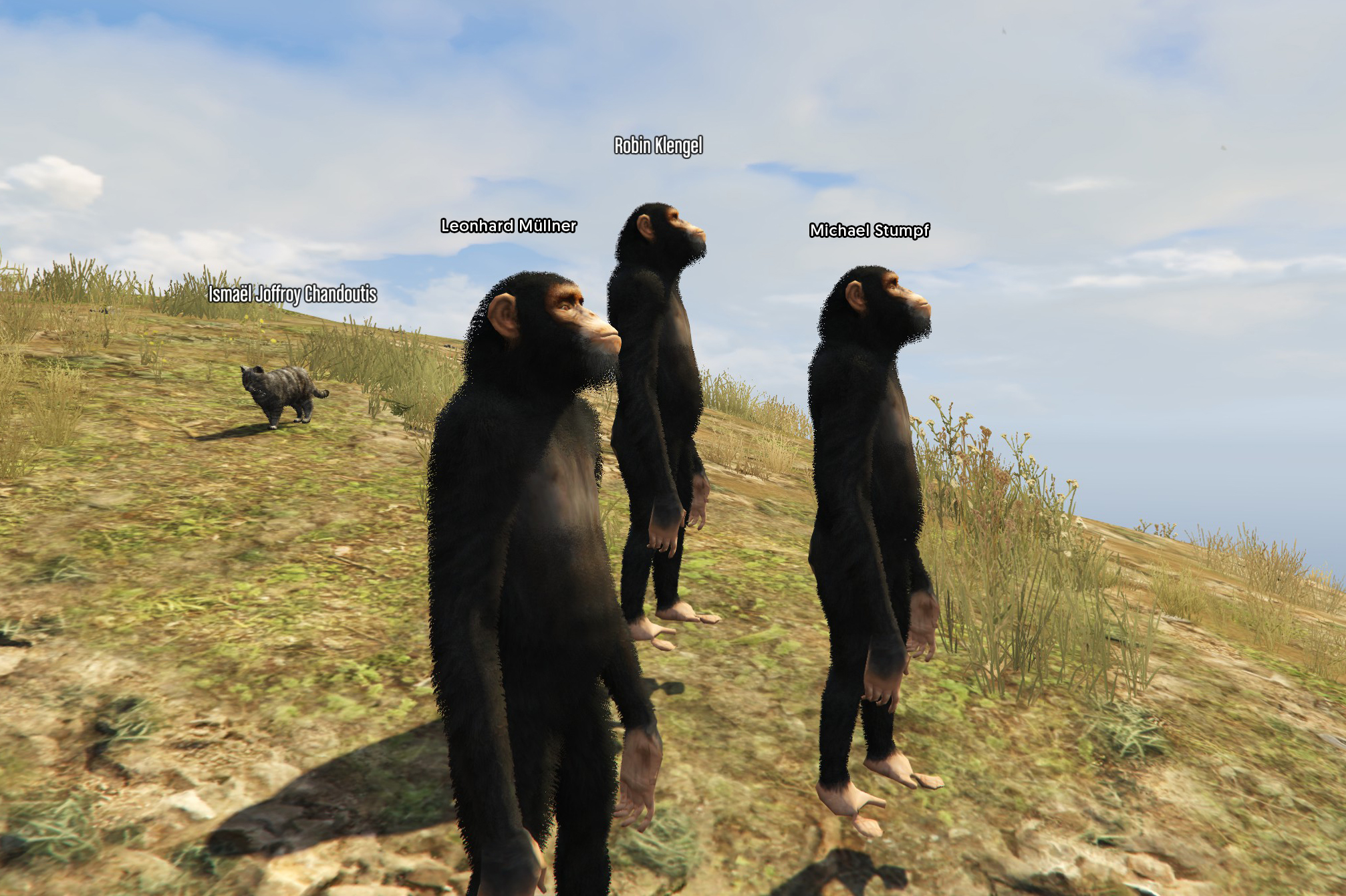#SPECCHIO: EVERYDAY DAYLIGHT | TOTAL REFUSAL & ISMAËL JOFFROY CHANDOUTIS
Everyday Daylight (2021) is the live performance organized by the Austrian collective Total Refusal and the French artist and director Ismaël Joffroy Chandoutis within the GTA V video game (Rockstar, 2013). The artists met in the virtual city of Los Santos to make a tour inside the videogame dimension focusing on the analysis of the hyperrealism that the capitalist media implement.
The group, made up of three chimpanzees (members of the Total Refusal collective: Leonhard Müllner, Robin Klengel, Micheal Stumpf) and a cat (Ismaël Joffroy Chandoutis), wander the streets of Los Santos while the various interlocutors discuss the possibilities of intervention within video games. Referring to their own practice, the four characters try to analyze the ways in which it is possible to violate the logic and deconstruct the hyperreality mechanisms implemented within the various videogame media. During these digressions Total Refusal and Chandoutis move around the city so as to allow the observer to see the details of the architectural constructions, parks, vehicles and any element that characterizes the city of Los Santos.
Los Santos and Los Angeles are the two sides of the same coin. The first is an almost exact, though not quite, digital replica of the physical counterpart, but both are the site of film productions: in the city of angels lies the elusive Hollywood, while GTA V and Los Santos are one of the most used sets for videogame film production. One is mirrored in the other in the construction of fictitious realities that imitate reality while presenting the public with a sweetened and anesthetized version of it. The group engages in an exploratory journey in search of the protagonist places of some of the most representative videogame works, such as the homeless community investigated by the artist Alan Butler in his photographic project In And Out In Los Santos (2016-ongoing) . It is surprising to note how even within the video game the representation of the homeless is so accurate and realistic that it emulates their social organization and somehow becomes an environmental human presence that increases the likelihood of the virtual city. Continuing the tour, the group’s attention shifts to another iconic place, the petrol stations: the reference to Ed Ruscha’s famous photographic series, Twentysix Gasoline Stations (1969), is clear.
Like other videogame interventions by Total Refusal, Everyday Daylight reflects on the role of the videogame as a visual-cultural system, which operates as a form of dynamic representation, or as a space for negotiation in which unresolved cultural, social or political frictions can be identified (Murray, 2020 ). It is now night and the protagonists’ car wanders through the illuminated streets of Los Santos drawing conclusions on the issues addressed, interacting with external interlocutors and dwelling on the impact of the videogame image within contemporary visual culture.
Total Refusal & Ismaël Joffroy Chandoutis
Everyday Daylight. The Hyperreal Normality of Video Games, 2021
Live online performance, Video still
Concept and text: Leonhard Müllner, Robin Klengel, Michael Stumpf in collaboration with Ismaël Joffroy Chandoutis and Susanna Flock
30/11/2022

